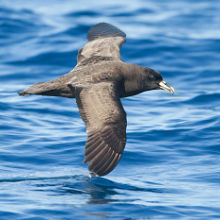How Serious is Bycatch?
Some would argue that bycatch is an acceptable consequence of supplying the world with wild-caught seafood. However, too often the scale of mortality is so high that it threatens the very survival of species and their environments. Every year, at least 7.3 million tons of marine life are caught incidentally. In some fisheries, the percentage of bycatch far outweighs the amount of target catch. For example, for every shrimp caught by nets dragged behind trawls in the Gulf of Mexico, over four times its weight is bycatch. There are many cases illustrating the devastating impact of bycatch. In 2007, the world learned that the baiji, a freshwater porpoise found only in China’s Yangtze River, finally succumbed to decades of incidental hooking (among other causes of mortality) and is now believed to be extinct. In Mexico’s Gulf of California, the population of another porpoise known as the vaquita has been reduced to under 20 animals, and gillnets continue to entangle and kill them every year. In the Northwest Atlantic, Canada and the US are working to ensure that the North Atlantic right whale, now numbering 340 individuals, does not perish from fatal entanglements in fishing lines. These are not rare examples, but part of a systemic problem worldwide. Bycatch also takes a serious toll on fishermen. It results in damaged gear, reduced catches, and fishing restrictions that threaten their economic survival.
Featured Bycatch Species

The white-chinned petrel is the most common avian bycatch species in the Southern Ocean (Weimerskirch et al 1999; Gilman 2006; Robertson et al 2006; Birdlife International 2013).
